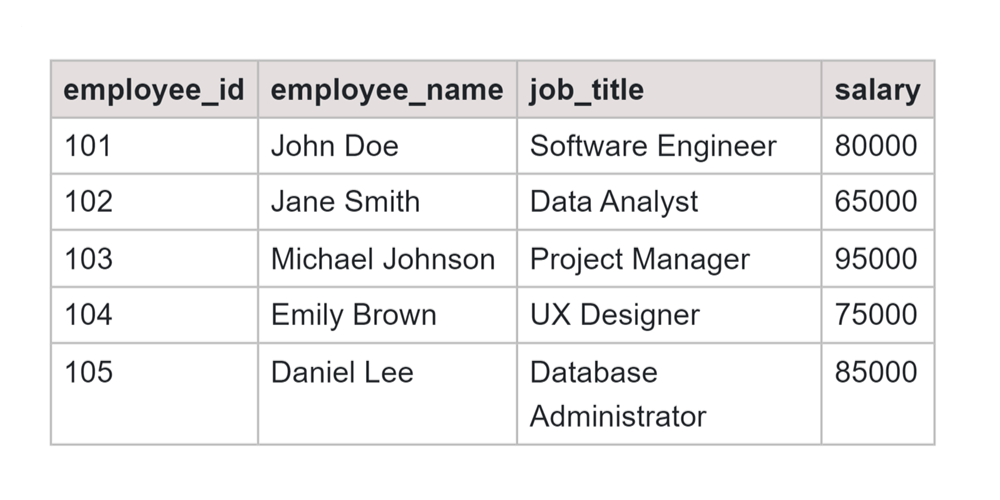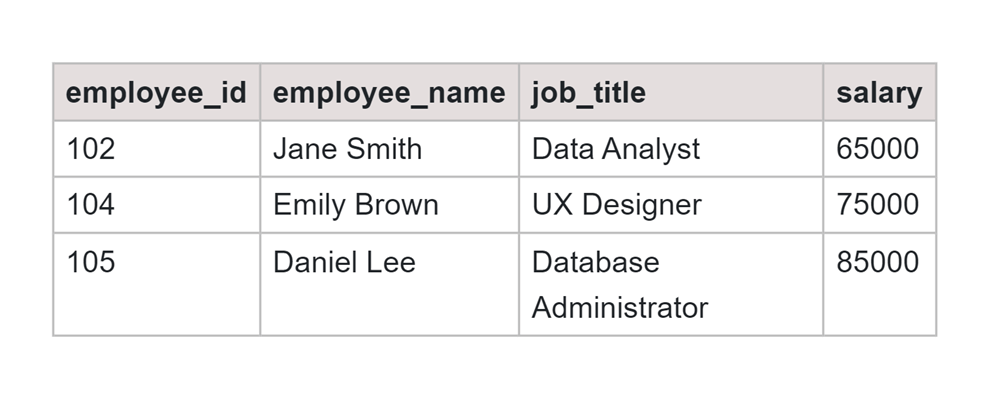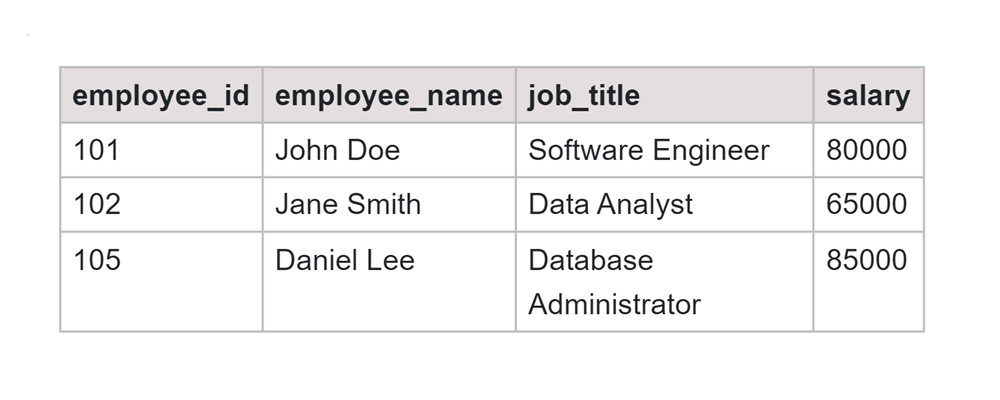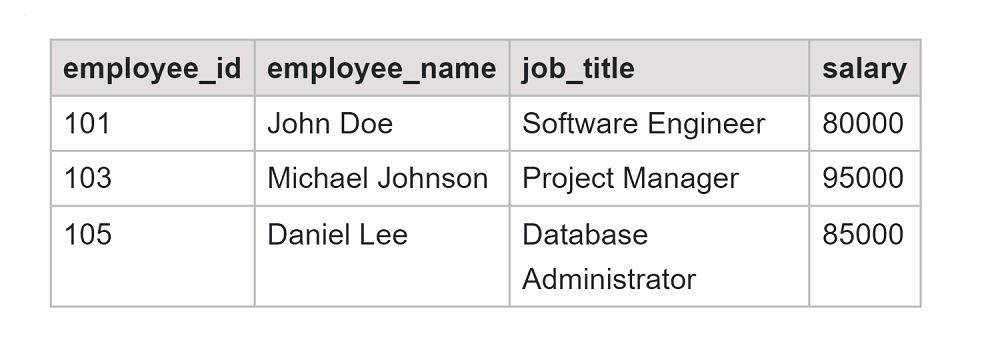The LIKE operator is like a detective tool for finding words or parts of words in a bunch of text. In this article, we'll look at how the SQL LIKE operator can handle different situations, like searching for patterns, multiple words, or a mix of both. We will also explore how we can handle dynamic patterns using it.
What is the LIKE Operator in SQL?
The LIKE operator in SQL is a flexible tool that is used for finding various things in a single column. It's helpful when you don't know the exact word or when things can be a bit messy. You can use special symbols like % to represent any letters or to represent just one letter.
So, if you're looking for words that start with "App," you can use 'App%' in your search. It's like telling SQL to find all the words that begin with "App" in a specific column of your data. This makes it handy when you're dealing with lots of information and you need to find specific bits or pieces of it.
Let's take a closer look at the SQL LIKE operator and explore its practical applications. By diving into its functionality, we can understand how it is employed to search for specific patterns or values within a given column.
SQL Operations with the LIKE Operator
Exploring the versatility of SQL is essential for effective data retrieval, and one powerful tool in this journey is the LIKE operator. This operator allows us to perform intricate operations by enabling pattern-based searches within database columns.
Basic Syntax:
SELECT column_name FROM table_name WHERE column_name LIKE 'Word%';
1) Searching for Multiple Words
One common scenario in the LIKE Operator involves searching for multiple words within the same column. The traditional LIKE operator can be adapted by using the OR logical operator to match any of the specified words.
Let us consider an example, to retrieve information about employees with specific job titles.
Table: Employee

SQL Query:
SELECT * FROM employee WHERE job_title LIKE 'Data%' OR job_title LIKE 'UX%';
Output:

2) Using SQL LIKE Operator with ‘IN’
When we use the IN and LIKE operators together in SQL, it makes getting specific data easy and quick. This combo allows us to ask for exactly what we want in just one line of code. It's like telling the database, "Show me the stuff that looks like this or that," and it does it for us without any fuss.
Let us consider an example, of retrieving information about employees with specific job titles using the ‘IN’ keyword.
We will the same example of the 'Employees' Table.
SQL Query:
SELECT * FROM employee WHERE job_title LIKE IN ('Software%', 'Data%');
Output:

3) Finding Words in Reverse
When using the LIKE operator in SQL with patterns like "word%" and "%word" you are essentially searching for data that either start with "word" or ends with "word". On the flip side, with "%word," it finds rows where the information ends with the exact character "word." This is useful when you're interested in entries that share a common ending.
By using these patterns along with LIKE, you make your searches more precise, helping you find exactly what you're looking for in your database.
This example retrieves rows where the values in the specified column end with "Doe."
SQL Query:
SELECT * FROM employee WHERE employee_name LIKE '%Doe';
Output:

These patterns are useful when you want to narrow down your search to specific prefixes or suffixes within the data.
Handling Dynamic Patterns
Using the LIKE operator in SQL for dynamic patterns adds flexibility to your searches. Unlike fixed searches that look for specific values, dynamic patterns let you create search conditions that can change based on criteria or user input. This is super helpful when dealing with situations where the search pattern can vary.
In this case, we will use a dynamic search pattern for salary. The search pattern is set to employees with a salary greater than or equal to $80,000.
SQL Query:
DECLARE @salary_pattern INT SET @salary_pattern = 80000; SELECT * FROM employee WHERE salary >= @salary_pattern;
Output:

Conclusion
To sum it up, the SQL LIKE operator is a handy tool for flexible and precise data searches. It allows users to find information based on patterns, making it useful for scenarios where exact matches might be tricky. Whether you're searching for specific words, or adapting to dynamic patterns with user input. Need some more explanation? get SQL assignment help instantly.








